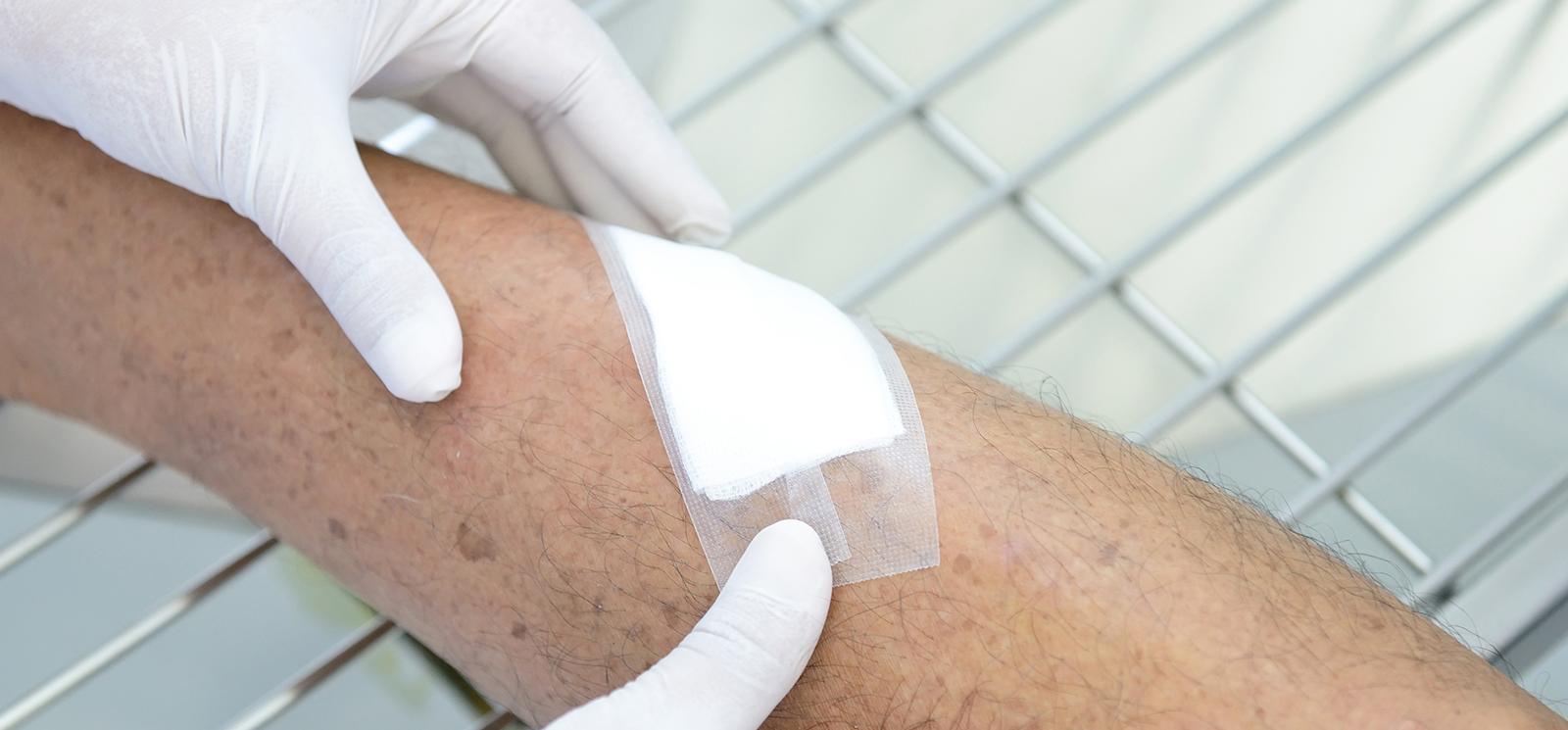Wound Care
The medical technology industry is continually advancing and developing new innovations that improve the health and well-being of patients worldwide.
Wounds are breaches in the structure of the skin that compromise skin function. They can be painful and lead to additional medical complications. Wounds become chronic when they have not completed the healing process in the expected time-frame, usually within 30 days.1
The wound healing process consists of four highly integrated and overlapping phases2:
- Hemostasis
- Inflammation
- Proliferation
- Tissue Remodeling or resolution
Failure of a wound to heal can have a profound effect on a patient’s quality of life.
Did You Know?
There are five to seven million episodes of non-healing cutaneous wounds each year in the United States, with an estimated cost of $20 billion annually to the U.S. health care system.3
Managing chronic wounds with medical technology solutions
Medical technology has helped to evolve wound treatment dramatically over the past 15 years.
From simple dressings to sophisticated, evidence-based options that treat and promote wound healing4, patient benefits include:
- Lowered incidence of readmission, additional surgeries, and complications5
- Reduced amputation rates67
- Reduced healing times8
- Reduced incidence of surgical dehiscence and infection9
References
[1] Snyder, David L, Nancy Sullivan, and Karen M Schoelles. "Skin Substitutes for Treating Chronic Wounds." Technology Assessment Report, 2012: ES-1.
[2] American College of Wound Healing and Tissue Repair and Angiogenesis Foundation. “Patient-Centered Outcomes in Wound Care.” 2013.
[3] Ibid.
[4] American College of Wound Healing and Tissue Repair and Angiogenesis Foundation. “Patient-Centered Outcomes in Wound Care.” 2013.
[5] Page JC, Newswander B, Schwenke DC, et al. Retrospective analysis of negative pressure wound therapy in open foot wounds with significant soft tissue defects. Ad Skin Wound Care. 2004 17)7):354-64.
[6] Armstrong DG, Lavery L. Negative pressue would therapy after partial diabetic foot amputation: a multicenter, randomized controlled trial. Lancet. 2005; 12 366(9498):1704-10.
[7] Blume PA, Walters J, Payne W, et al. Comparison of negative pressure wound therapy using vacuum-assisted closure with advanced moist wound therapy in the treatment of diabetic foot ulcers – a multicenter randomized controlled trial. Diabetes Care Vol. 31; No 4; 631-636; 2008.
[8] Blume PA, Walters J, Payne W, et al. Comparison of negative pressure wound therapy using vacuum-assisted closure with advanced moist wound therapy in the treatment of diabetic foot ulcers – a multicenter randomized controlled trial. Diabetes Care Vol. 31; No 4; 631-636; 2008.
[9] Standard JP, Volgas DA, McGwin G III, et al. Incisional negative pressure wound therapy after high-risk lower extremity fractures. J Orthop Trauma. 2012; 26 (1): 37-42.
